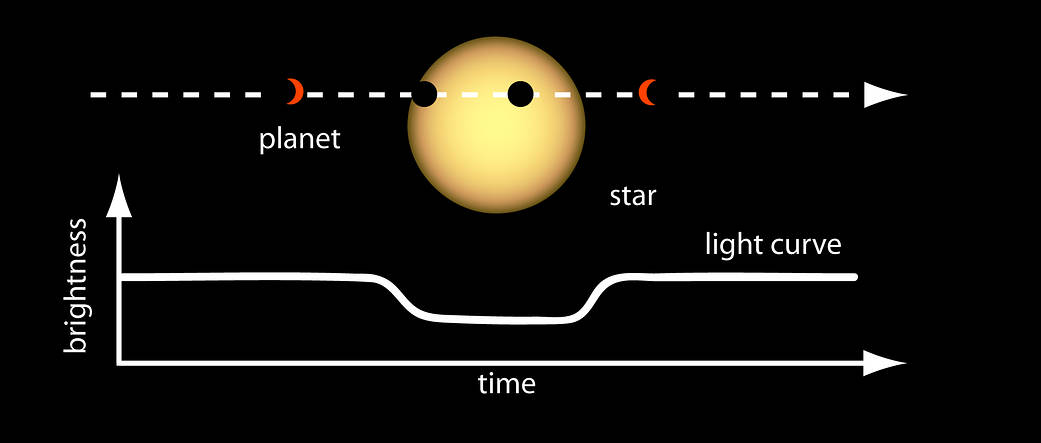Transit
A transit event takes place when a planet passes in front of a star. As it does so, it blocks some of the star's light. Astronomers look for regular dips in light from a star. These can be made by a large planet passing in front of it.

Credit: NASA Ames
If the planet is giant and close to the star, this dip in brightness can be as large as 2% of the total brightness of the star. It will also occur every few days. This makes this method good for finding planets with short orbital periods. Finding a planet which takes tens or hundreds of years to orbit its star would take too long!
We know that there are millions of stars in our galaxy. However, the transit method only works if we have a certain view of the planet and its star. If we look from above the orbit of the planet, we will never see the planet pass between us and the star. It is thought that around 1% of stars might have a transiting planet, although it is difficult to catch one in the act.
This method lends itself to searches that use telescopes to survey regions of the sky. The Liverpool Telescope can also hunt for exoplanets using this method. According to NASA's Exoplanet Census, over 75% of known exoplanets were found using the transit method.

